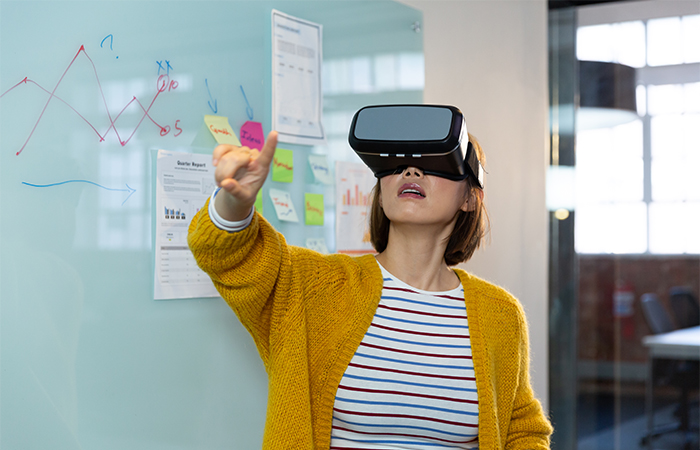Augmented Reality (AR) is rapidly transforming the landscape of marketing, offering innovative ways for brands to engage with consumers and create immersive experiences. As technology continues to evolve, AR is becoming increasingly accessible, allowing businesses of all sizes to harness its power and leverage its potential in their marketing strategies.
One of the key drivers behind the rise of augmented reality in marketing is its ability to bridge the gap between the digital and physical worlds. By overlaying digital content onto the real world through smartphones or AR-enabled devices, brands can deliver interactive and memorable experiences to their target audience.
Applications of Augmented Reality
Retail Sector
One of the most significant applications of AR in marketing is in the retail sector. With AR-powered apps, consumers can visualise products in their own environment before making a purchase. For example, furniture retailers can allow customers to see how a sofa would look in their living room, or cosmetic brands can offer virtual try-on experiences for makeup products. This not only enhances the shopping experience but also reduces the likelihood of returns, leading to increased customer satisfaction and loyalty.
Brand engagement
AR is also revolutionising the way brands engage with consumers through storytelling. By creating interactive AR experiences, brands can convey their message in a more engaging and memorable manner. For instance, museums and art galleries can use AR to provide additional information and context about exhibits, while publishers can bring printed materials to life with interactive elements.
Data-driven marketing
In addition to enhancing the consumer experience, AR also offers valuable data insights for marketers. By tracking user interactions and engagement with AR experiences, brands can gain valuable insights into consumer behavior and preferences. This data can be used to optimise future marketing campaigns and tailor content to better meet the needs of their audience.
Event Marketing
Another area where AR is making waves is in the realm of event marketing. Brands are increasingly using AR to create immersive experiences at trade shows, conferences, and other events. From interactive product demonstrations to gamified experiences, AR allows brands to captivate audiences and leave a lasting impression.
Furthermore, AR has the potential to revolutionise traditional advertising channels. With the rise of AR-enabled smartphones, consumers can now interact with advertisements in ways never before possible.
Recent Blog: Boosting Online Brand Visibility in 2024: Key Strategies
The rise of augmented reality in marketing is driven by its ability to create memorable brand experiences. Unlike traditional advertising methods, which often rely on passive consumption, AR allows brands to actively engage consumers in interactive storytelling.
For example, outdoor billboards can come to life with interactive content, while print ads can trigger AR experiences when scanned with a mobile device. This opens up new possibilities for brands to engage with consumers in the physical world and drive conversions.
Unlocking Opportunities via Augmented Reality
By immersing users in a virtual world where they can explore, interact, and discover, AR experiences leave a lasting impression and foster stronger emotional connections with the brand. This emotional resonance can lead to increased brand loyalty and advocacy, as consumers are more likely to remember and recommend brands that provide memorable experiences.
Moreover, augmented reality has the potential to democratise marketing by offering cost-effective solutions for businesses of all sizes. With the widespread availability of AR-enabled smartphones and the development of user-friendly AR platforms, brands no longer need large budgets or extensive technical expertise to implement AR campaigns.
This accessibility opens up new avenues for small and medium-sized businesses to innovate and differentiate themselves in a competitive market landscape. As AR technology continues to evolve and become more sophisticated, we can expect to see even greater adoption and integration of AR into marketing strategies across industries.
As the technology behind augmented reality continues to advance, the opportunities for marketers are endless. However, it is essential for brands to approach AR marketing with creativity and authenticity. Consumers are looking for experiences that add value to their lives and resonate with their interests and values.
Final Takeaways
In conclusion, the rise of augmented reality in marketing represents a significant shift in how brands connect with consumers. By leveraging AR technology, brands can create immersive experiences that capture attention, drive engagement, and ultimately, foster deeper connections with their audience. As AR becomes increasingly integrated into our everyday lives, the possibilities for innovative marketing campaigns are limited only by the bounds of creativity and imagination.

